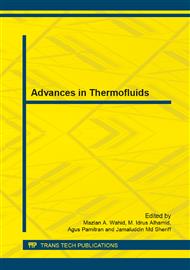p.185
p.192
p.201
p.206
p.213
p.217
p.223
p.229
p.235
Effects of External Hard Particles on Brake Noise of Disc Braking System
Abstract:
The open design and position of disc brake that is closed to road surfaces enable contaminants to enter the brake gap and caused noise and tribological disturbance at the brake interface. Contaminants such as dirt and soil can be present and are expected to influence the occurrence of brake squeal that produce an annoying sound during braking action. The objective of this study was to examine the effect of external hard particles at different disc sliding speed on generation of brake squeal using a brake dynamometer. Different rotational speed of disc brake was selected and the experiments squeal noise data was collected and analyzed using the Fast Fourier Transformation (FFT) analyzer. From the experiments, the presence of external particle and the rotation speed of disc brake promotes the generation of brake squeal phenomenon by changing the surface roughness and effective contact of brake interface. Results obtained from the experiment also showed that higher rotating disc generate higher sound level meter or squeal frequency and increase numbers of squeal noise generated.
Info:
Periodical:
Pages:
213-216
Citation:
Online since:
August 2013
Price:
Сopyright:
© 2013 Trans Tech Publications Ltd. All Rights Reserved
Share:
Citation:


